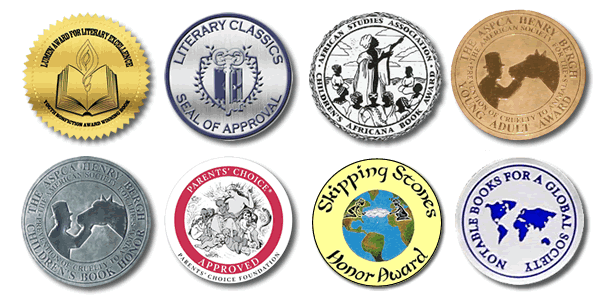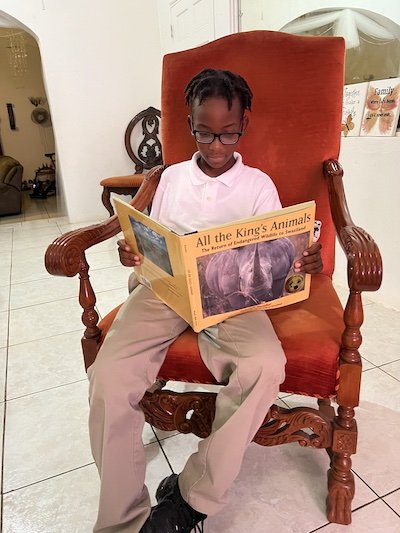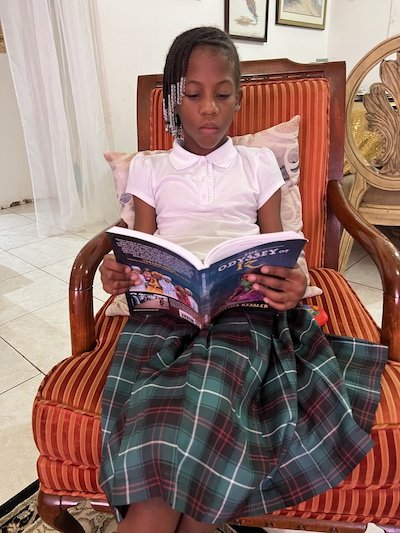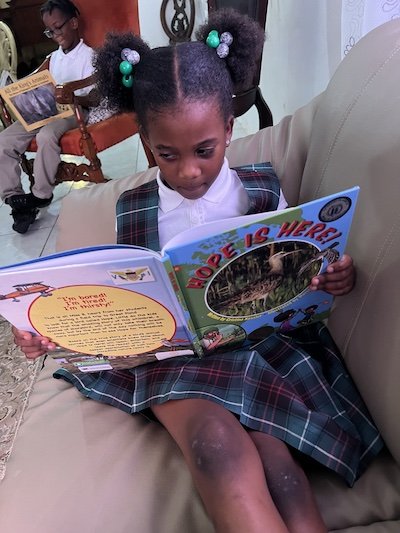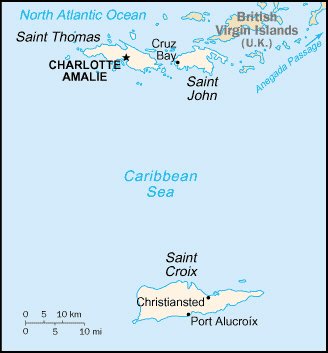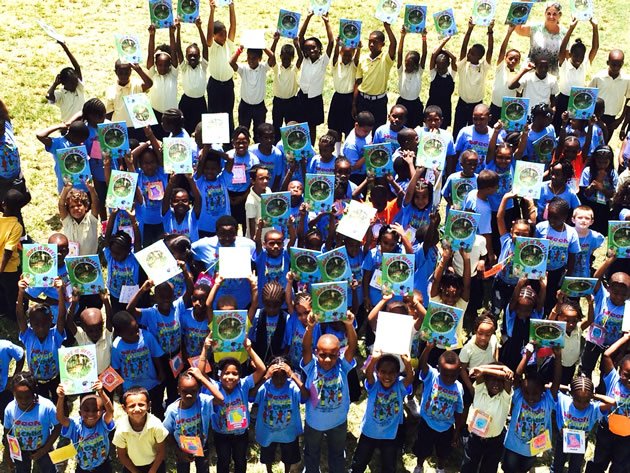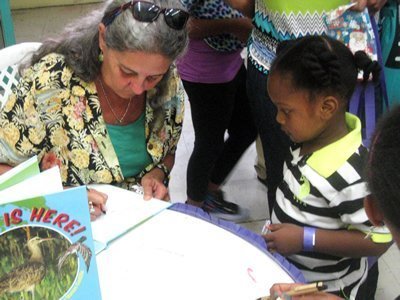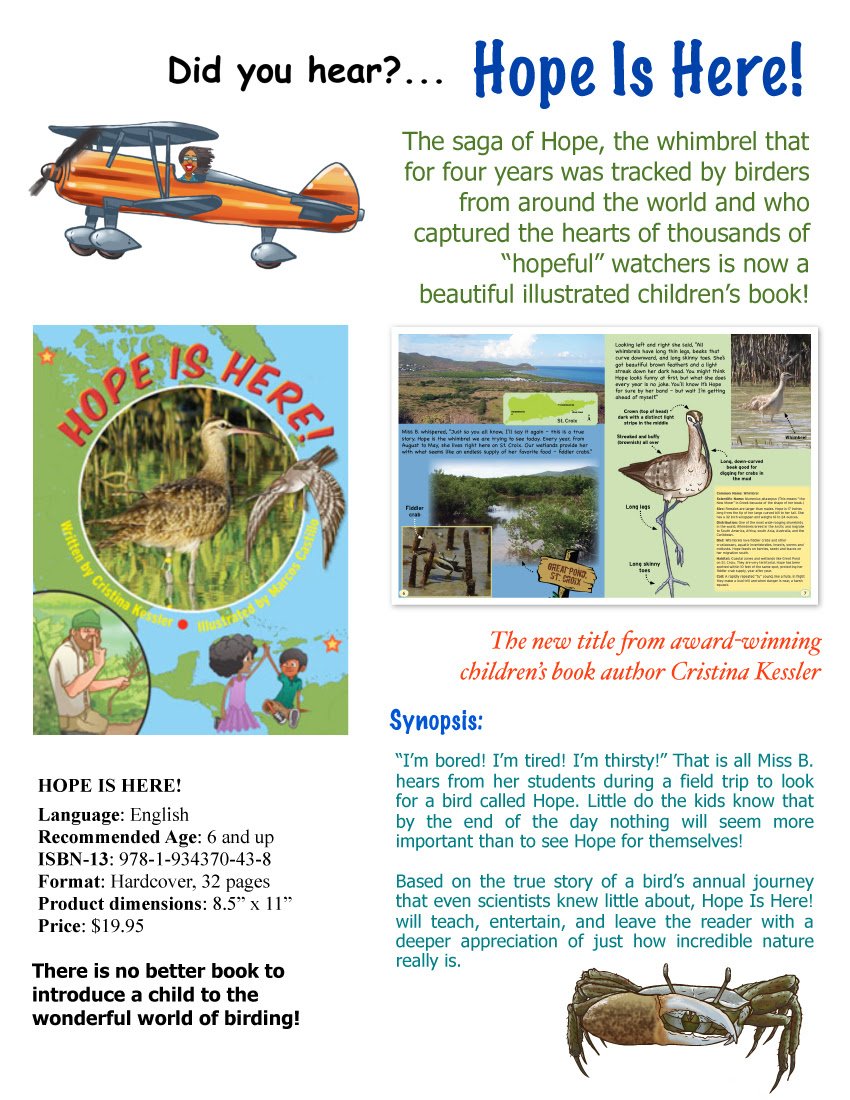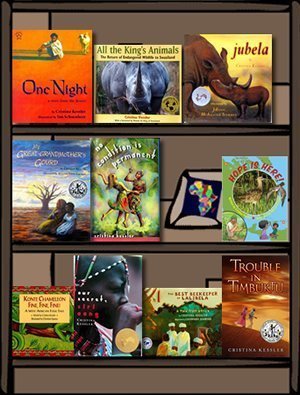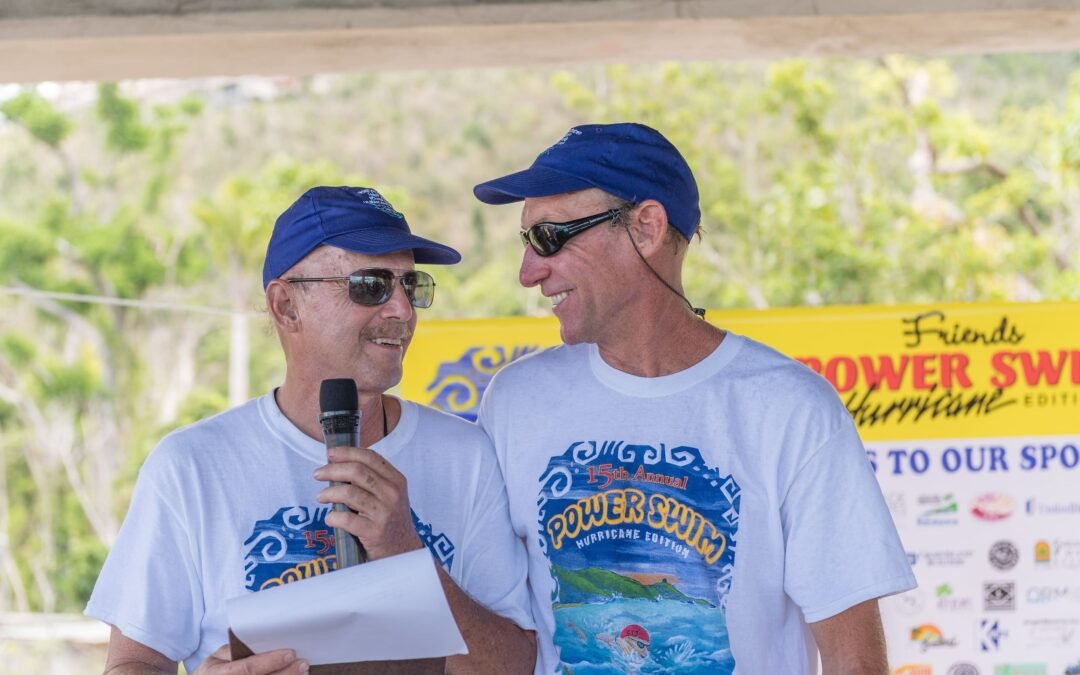
Remembering Joe and Cristina Kessler; Friends’ Beach-to-Beach Swim Was “Joe’s Baby”

When more than 300 swimmers gather to participate in the Friends of the Virgin Islands National Park’s Beach-to-Beach Power Swim on Sunday, at one point, there will be one name on everyone’s mind — and in the hearts of many more.
That name is Joe Kessler. The popular St. John swimming event was “Joe’s baby,” according to former colleague Rafe Boulon.
Joe came up with the idea for the Beach-to-Beach Swim more than 21 years ago when he served as president of the Friends of the Virgin Islands National Park; for more than a dozen years, he was the voice on a megaphone that guided swimmers at the event’s start as they leaped into the water at Maho Bay.
Joe and his wife Cristina — a writer and activist who was equally renowned throughout the territory and the planet — died a month ago under circumstances that are still incomprehensible to those who knew them.
Since retiring from the Friends of the Park at the end of 2018, Joe and Cristina spent much of their time doing what they loved best — traveling. Having lived abroad for most of their adult lives, they had dedicated many months in recent years to exploring the United States.
This spring, at age 73, the Kesslers set out from Sarasota, Florida, where they had purchased a home only months ago, to visit historic sites, natural wonders, and friends acquired throughout their many travels.
On April 25, both died instantly when a train smashed into their 22-foot RV as they were driving across railroad tracks in rural Taylorville, Illinois.
Everyone who knew them has wondered the same thing: How could this happen? How could these savvy travelers who had visited more than a hundred countries, who had served in the Peace Corps and worked in Africa, Asia, and South America, meet their end in broad daylight in the middle of America where there appeared to be no dangers of any kind?
As of yet, no one knows. According to reports, the accident is being investigated by the Christian County Sheriff’s Office.
Friends who have pored over Google maps of the site have said that there were no gates or flashing lights at the crossing. The Source put in a call to the county coroner’s office to get further details but had not received a response by press time.
The Friends of the Virgin Islands National Park is making plans to formally honor Joe Kessler, according to Tonia Lovejoy, the organization’s executive director. His contribution will be celebrated at the swim on Sunday. More information will be announced as the board formalizes its plans.
Joe and Cristina first met in the Peace Corps in 1973 and traveled the world together before arriving on St. John in 2001.
“We were volunteers for 5 years in Honduras, Kenya and the Seychelles,” Cristina wrote on her website. “Upon finishing Peace Corps we took a 3 1/2 year trip that got us from the Seychelles, down the Nile for 1000 miles, 7 months crewing on a 55’ trimaran in the Caribbean then overland from Venezuela to Tierra del Fuego and back.”
Their adventures continued. “We spent 5 months on an uninhabited island in the Galapagos, tagging turtles for the Darwin Research Station, and went to Antarctica for 3 ½ weeks with the Chilean navy. From 1981 to 2001 Joe worked for CARE and we lived in Sierra Leone, Indonesia, Honduras, Mexico, Niger, Mozambique, Sudan, Ethiopia and Mali. Between Niger and Mozambique in 1990 we took a seven-month trip to the South Pacific.”
But after years of living abroad, in 2000 they decided to move closer to their families in the States.
Joe and Cristina first seriously discussed moving to St. John when they were floating down the Niger River with friends John and Ginger Garrison in December 2000.
They first met Ginger in Nakuru, Kenya, in 1975 when Joe and Cristina were serving in the Peace Corps, and Ginger was working on an ecological monitoring project.
As Joe and Cristina continued to move about, in the 1980s, John and Ginger settled in the Virgin Islands, where Ginger continued her ecological research work, and John became the first president of the Friends of the Virgin Islands National Park.
According to Ginger, on their Niger River trip in December 2000, “Joe said to John, ‘If you ever want to leave the Friends, let me know,’ and John answered, ‘In fact, I’m planning to give my notice in April.’” Joe then applied for the position, and the Kesslers moved to St. John to begin their respective work in August 2001.
“Joe was a very effective manager,” said David Holzman, a former builder who once shared common office space with the Friends of the VINP. “A lot of his success was listening to others and thinking about turning their suggestions into reality. He had managed many different people during his career, and he applied what he had learned; he was able to communicate well with everyone. He was also a good fundraiser.”
“Joe was amazing. He laid out plans for everything. He was like a rock,” said Trish Capuano, a close friend of the Kesslers. A civil engineer by training, Joe had begun work with the Peace Corps building roads before taking on more managerial roles.
After retiring to Sarasota, Joe served as a volunteer building homes with Habitat for Humanity, according to Capuano. “The spirit of humanitarianism ran throughout their lives,” she said.
Although they shared a desire to give back to the world, Joe and Cristina had widely different temperaments. Whereas Joe was calm and analytical, Cristina was passionate and outspoken.
She fought for women’s rights wherever she went, helping women in Mali and Ethiopia produce magazines that took on taboo subjects like rape, domestic violence, and menstruation.
She helped fundraise for Women on Wheels, an organization that delivered thousands of wheelchairs to disabled women around the world and which also taught local community members how to repair the wheelchairs.
She raised funds on St. John and elsewhere for a school in South Africa for children orphaned by the AIDS crisis and for a Maasai village in need of a well.
Many of these projects are described in her book “Tales of an Ikut Swami.”
“Ikut Swami” was the occupation written on Cristina’s visa when she and Joe moved to Lombok, Indonesia, relatively early in their marriage. It means “Follows the husband,” and at first it infuriated her as she saw herself as a professional writer and photographer. She eventually came to realize that being an “Ikut Swami” gave her extraordinary freedom to choose causes to champion and make them happen.
In all she published 12 books, mostly for children and young adults. On her website, she described each of her books, including her first Young Adult novel, “No Condition is Permanent.”
“[It] is the first time I have written something that questions an aspect of African life — female circumcision — while simultaneously celebrating rural African life. It’s a book about cross-cultural friendships, harmful traditional practices and discovering where to draw the line personally in what you can do to help a friend.”
However, most Virgin Islanders are much more familiar with her book, “Hope is Here,” a nonfiction book about a particular bird — a whimbrel — that migrated yearly from the Arctic Circle to St. Croix. Former First Lady Cecile de Jongh commissioned the book and gave out copies to the territory’s children during her annual Christmas party.
At the end of “Tales of an Ikut Swami,” Cristina mentioned two African proverbs. One was, “Life isn’t about what you haven’t done — it’s about what you do next.” Friends have noted how that captures the life she and Joe lived for almost 50 years together.
The other is, “If you go alone, you’ll go fast — but if you go together, you’ll go far.” And she added, “That’s exactly what Joe and I have done.”
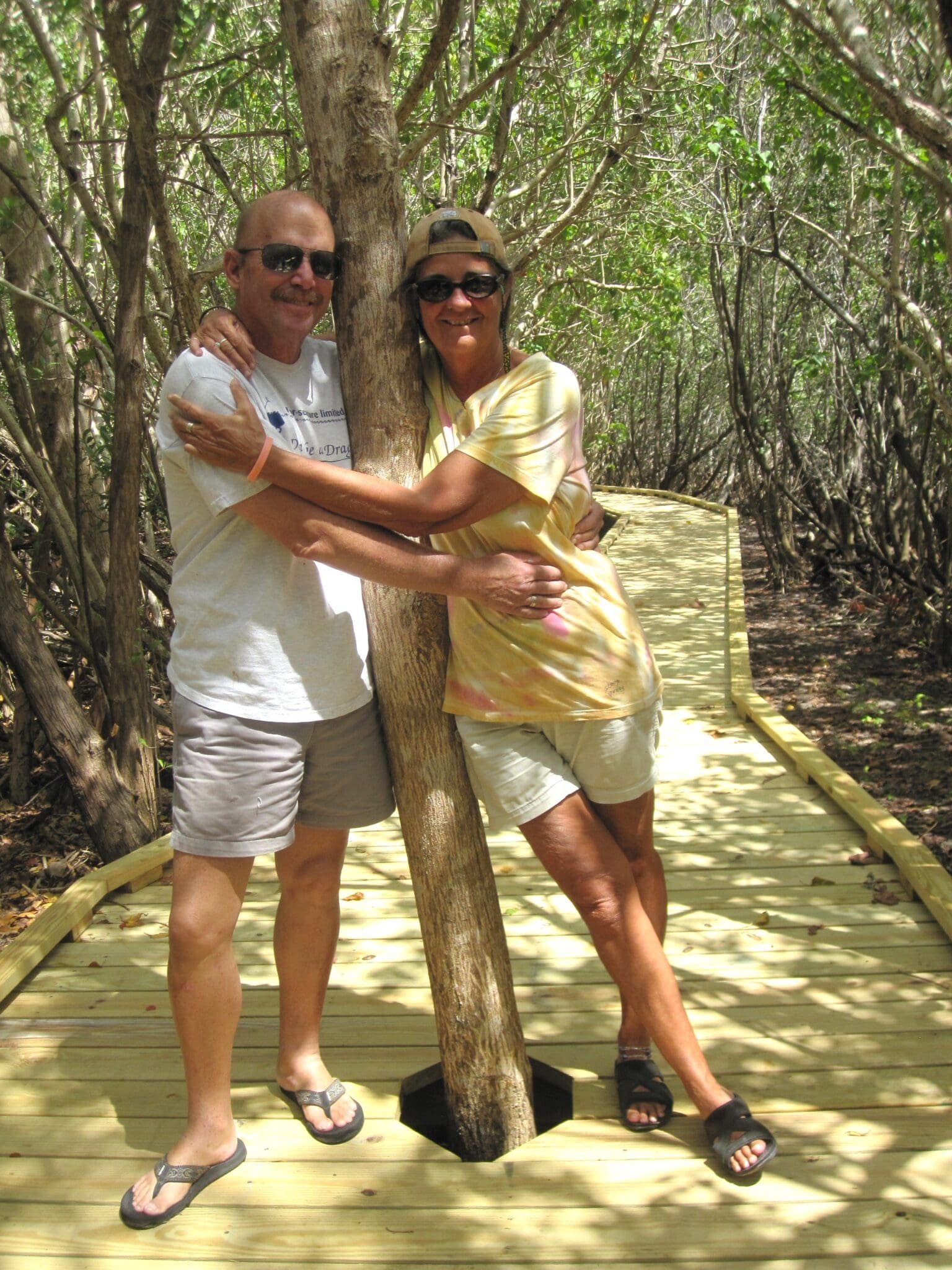
Joe and Cristina Kessler loved nature. (Photo courtesy Kessler family)

A swimmer crosses the finish line at Hawksnest Beach in the Beach-to-Beach Power Swim. (Photo courtesy the Friends of the Virgin Islands National Park)

Joe Kessler shares a happy moment with event collaborator Jeff Miller in the Beach-to-Beach Swim following Hurricane Irma. (Photo courtesy Kessler family)
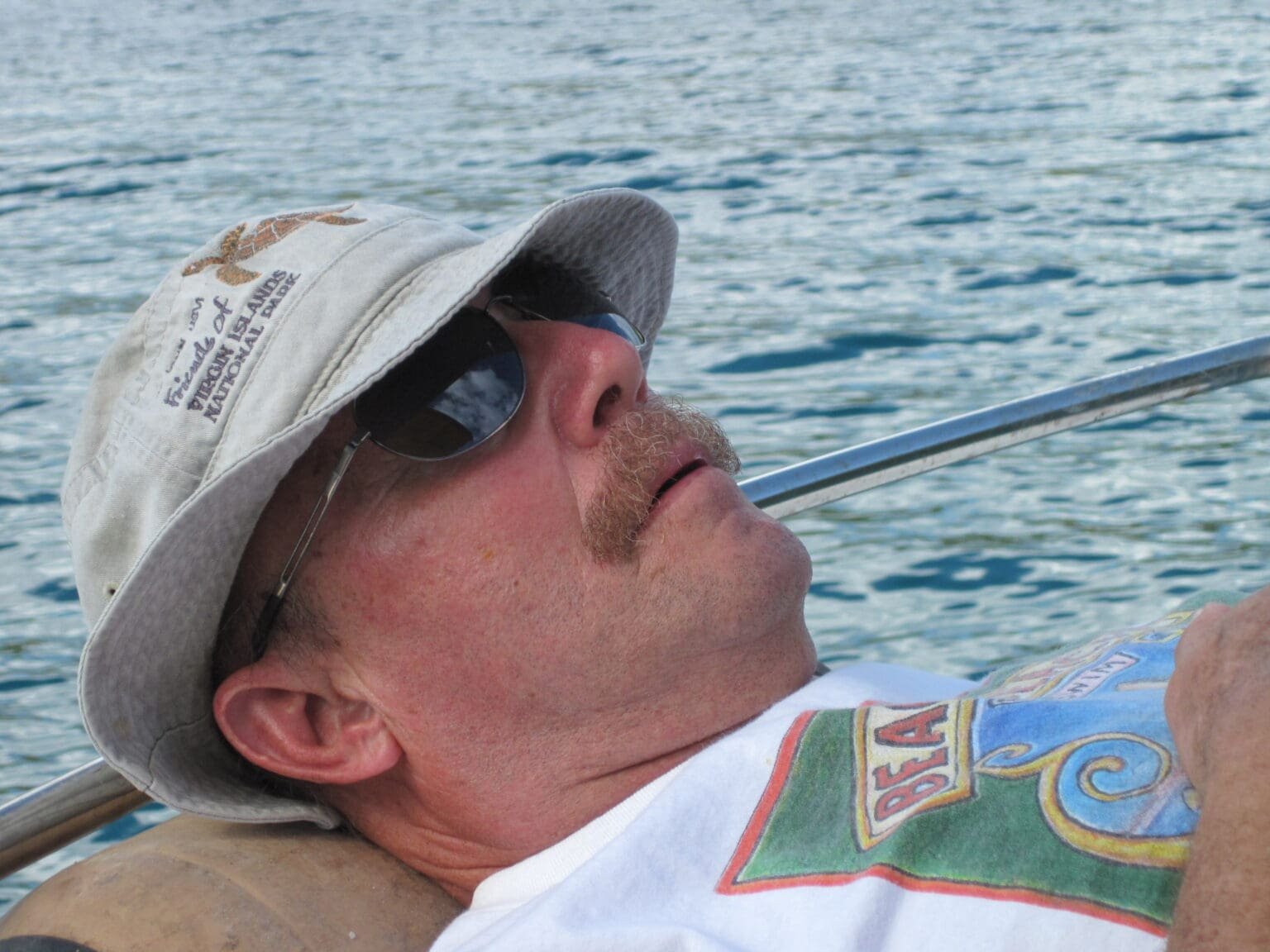
Joe Kessler at rest. (Photo courtesy Kessler family)

Cristina Kessler displays her newly published book “Tales of an Ikut Swami” in 2018. (Source photo by Amy H. Roberts)


